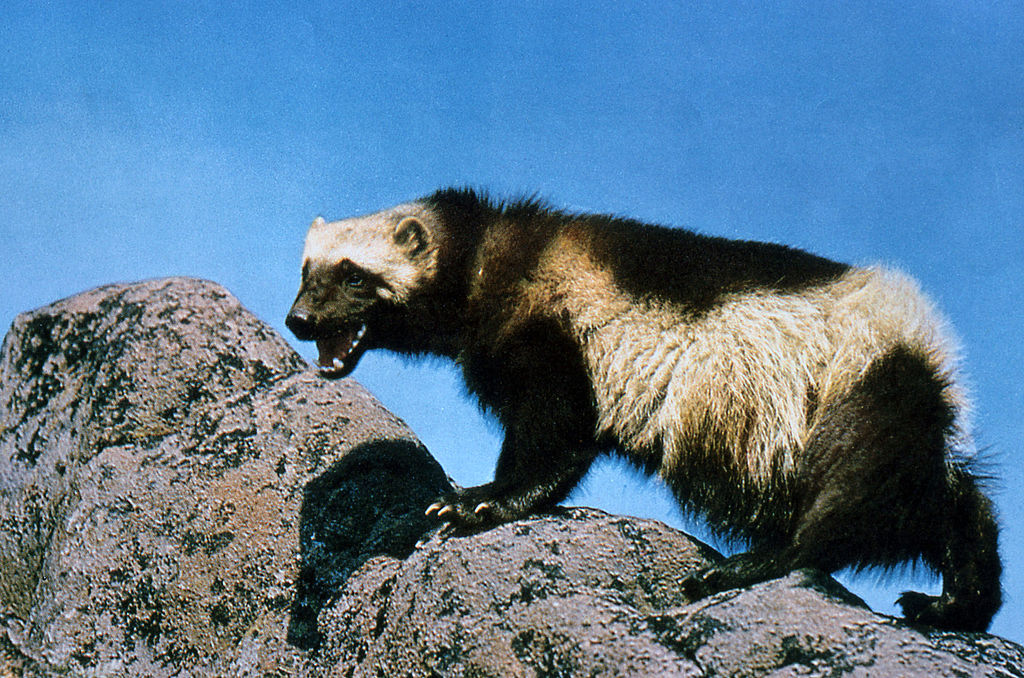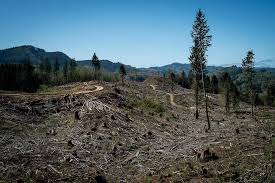Talking points for comments on the Bitterroot Front Project
The project area is located along the eastern face of the Bitterroot Range from the Bitterroot National Forest boundary near McClain Creek to Trapper Creek. It includes: Blodgett Canyon, Lost Horse, Mill Creek, Lake Como, Tin Cup, Bass Creek, and more
Or e-mail Ranger Steve Brown: steve.brown2@usda.gov
Please use these points and put them in your own words. Tell the Bitterroot National Forest how important this area is to you.
- A project of this size is too massive to use the minimal analysis in an Environmental Assessment. It must be carefully analyzed with an Environmental Impact Statement.
- Condition based management leaves the public out of the decision-making process. Site specific information and analysis should occur before not after the Decision. If the public disagrees with implementation plans, they have no recourse and no power to change them. Site specific analysis on the ground is necessary and should happen before the comment period, so the public can submit meaningful comment.
- The project’s site-specific amendments for old growth standards, elk habitat road densities, thermal cover, snags, and coarse woody debris have been used for years without sufficient monitoring for efficacy and without proper analysis. Ask for no ground disturbance in old growth and mature stands.
- Many of the roads that will be re-opened are overgrown and have not functioned as roads for over 36 years. No roads should be re-opened or re-constructed in roadless areas and Inventoried Roadless Areas. Roadless areas provide intact habitat for wildlife like wolverine, bears, and elk. Overgrown roads should not be opened and no new roads should be built in the project area.
- Roadwork, new roads, and project actions will be detrimental to bull trout, clean water supplies, and watersheds.
- The carbon emission and carbon storage losses from a project of this immense scale must be calculated and shared with the public.
- Project actions will limit natural re-occupation of grizzly bears in the Bitterroot Ecosystem, thus impeding grizzly bear recovery. Grizzly bears have been verified in and near the project area.
- Wolverine are proposed for listing under the Endangered Species Act. Project activities will negatively affect wolverine known to occupy the project area.
- Project actions are detrimental to migratory birds, eagles and other sensitive species.
- The dust from log hauling, road reconstruction/re-blading, and road construction from this project will affect the air quality and health of local residents. Smoke from constant prescribed burning will affect air quality in the spring and fall outside of fire season, a detriment to public health.
Conservation Groups Blast Bitterroot Front Project
See article on Conditions Based Analysis and the Bitterroot Front by Jeff Juel at Friends of the Clearwater
https://www.friendsofthebitterroot.net/pdf-conditions-based-analysis-the-bitterroot-front-project/
See article in Montana Free Press:
A coalition of public interest conservation organizations is organizing to stop a huge timber sale proposed by the U.S. Forest Service for the Bitterroot National Forest. The Forest Service plans to cut trees off more than 55,000 acres (86 square miles) of national forest along the face of the Bitterroot Mountains west of the Bitterroot River in Montana. The Forest Service would also build an untold extent of new roads, likely dozens of miles, to access forest areas for clearcutting and other industrial logging, bringing industrial disturbance up to the boundary of the Selway-Bitterroot Wilderness.
The groups are Friends of the Bitterroot, Flathead Lolo Bitterroot Citizen Task Force, WildEarth Guardians, Montana Chapter of the Sierra Club, Native Ecosystems Council, Alliance for the Wild Rockies, Western Watersheds Project, Montana Ecosystems Defense Council, Gallatin Wildlife Association, Friends of the Clearwater, Wilderness Watch and Center for Biological Diversity.
Jim Miller, President of Friends of the Bitterroot states, “The Forest Service is proposing to log the entire Bitterroot front. Commercial logging in the mature forest far from homes has never done any good. Repeating the same mistakes cannot be the solution and only degrades the public lands we all value. Our community does not want the beautiful mountain and canyon vistas on the Bitterroot front scarred by more roads and clearcuts.”
The proposal also indicates the Forest Service wants to break commitments made to the public 35 years ago when the Bitterroot Forest Plan was adopted—commitments made to protect old-growth forests, wildlife habitat features such as snags, and elk habitat security. And 13,000 acres (over 20 square miles) of logging is proposed inside Inventoried Roadless Areas, degrading their roadless characteristics and reducing their eligibility to be recommended for wilderness when the BNF Forest Plan is revised in the coming years.
Jeff Juel of Friends of the Clearwater stated, “As usual, the Forest Service is pretending timber production isn’t driving this proposal, instead blaming the forest for ‘departure from natural disturbance patterns’ and ‘departure from historic fire regimes (which) has created forest stands characterized by high stem densities, hazardous fuels buildup, stressed tree conditions …with high susceptibility to uncharacteristic fire behavior and …at high risk to future insect outbreaks.’ They don’t say why such a forest malady allegedly exists on 144,000 acres or who’s responsible, even though they’ve supposedly been in charge for over a century.”
“The Forest Service is simply wrong that logging thousands of acres, including mature and old-growth forests, will mimic natural conditions or make people safe from wildfire, as they claim,” said Adam Rissien with WildEarth Guardians. “Managers cannot replace mother nature with a chainsaw, and the best way to protect communities from fire is to focus work in the immediate area around homes and structures,” he added. “Even though the agency would spend untold millions of dollars to subsidize timber production, it won’t invest a nickel to assist private landowners to learn and implement firewise protections for their homes and property, only offer ‘encouragement to take appropriate action on their lands’ ” Rissien concluded.
“As an organization which advocates for wildlife of southwest Montana, we are very disappointed to see the scope and magnitude of this project,” said Clint Nagel of Gallatin Wildlife Association. “We feel the project as proposed will have a significant and negative impact upon wildlife, not just in western Montana but also up and down the connectivity corridors of the northern Rockies. We know we can do better. We have to do better than this.”
“The impacts of the Bitterroot Front project would be vast,” said Jocelyn Leroux, Montana-Washington Director with Western Watersheds Project. “As currently proposed, the project will undoubtedly cause harm to the wildland ecosystems that native fish and wildlife such as bull trout, westslope cutthroat trout, big game, and grizzly bears depend on. A full, thoughtful analysis to provide a better path forward is required.”
“Now that grizzly bears have been confirmed in the Bitterroot Ecosystem, the Bitterroot National Forest is legally required to institute habitat protections with limitations on open roads, total roads and minimum amounts of secure habitat. The Forest Service must follow the law just like all Americans are required to do. The Forest Service must protect grizzly bear habitat instead of clearcutting it,” said Mike Garrity, Executive Director of the Alliance for the Wild Rockies.
The organizations’ comment letters can be accessed here.

Bitterroot Front Project Scoping Comments Due May 20 2022
Suggested talking points for the Bitterroot Front Project
- An Environmental Impact Statement (EIS) is necessary for a project of this magnitude. The 144,000-acre project spans the entire East face of the Bitterroots from Florence to Darby. It will degrade wildlife habitats, streams, water, air, and carbon sequestration. An EIS requires a more thorough, site-specific analysis than the planned Environmental Assessment (EA).
- A condition-based analysis is not appropriate. This multi-decade project relies on unproven computer modeling instead of an on-the-ground, site-specific analysis. Public input is eliminated from the decision-making process.
- No roads, temporary or otherwise, should be constructed or reconstructed in the project area. The Bitterroot National Forest is decades behind on the maintenance of currently existing roads with little hope of catching up. More roads would put the Agency further behind.
- Stay out of Recommended Wilderness, and Inventoried Roadless Areas. Roadless areas provide intact habitats for wildlife. Do not fragment what little remains.
- No commercial logging in Management Area 5.
- Respect and adhere to riparian zone protections. The project area includes critical habitat for bull trout and westslope cutthroat trout.
- No commercial logging in old growth. Allow for natural processes in old growth stands.
- Do not change the Forest Plan definition of old growth to 8 large trees per acre. Retain all trees 16 inch diameter or greater in compliance with the recent Executive Order directing the preservation and protection of mature and old-growth forests.
- Retain Forest Plan standards that protect wildlife. Elk habitat, old growth, coarse woody debris, snag retention, hiding cover, and thermal cover standards should be upheld. Wildlife relies on these standards to survive and thrive in our forest.
- This project area is a linkage zone and migration corridor for wildlife including elk, Canada lynx, wolverine, fisher, and bears. Project activities must not degrade or fragment this vital connectivity area
- Do not create large openings (clear-cuts). Large openings remove natural windbreaks and have been shown to increase wildfire speed and intensity.
- Project activities conflict with climate goals. Logging and road building increase carbon emissions, remove carbon stores, and reduce future carbon sequestration.
Use this link to submit comments: https://cara.fs2c.usda.gov/Public//CommentInput?Project=57341
Or send them by mail to:
District Ranger Steve Brown, Stevensville Ranger District, 88 Main Street, Stevensville MT 59870
Or fax: 406-777-7423
Comments may also be hand delivered weekdays 8:00am – 4:30pm.
Bitterroot Front Project Pre Scoping
Largest Timber Project in the Bitterroot scroll down for talking points
See Story on European Wilderness Society Website
What do those historical pictures of the forest mean and what does it mean to force a return to "historical conditions" in the Bitterroot. Here is a great explanation by Keith Hammer of the Swan View Coalition
See Story by Jon Haber in the Smokey Wire
150,000 Acre "Project" on the Bitterroot
November 21, 2019
See Story on Conditions Based Court Injunction in Prince of Wales
Court Enjoins Logging Using “Condition-Based Analysis”
September 23, 2019
Forest Supervisor Addresses Confusion over Bitterroot Front Project:
November 19, 2019

The Bitterroot National Forest is proposing the largest ever timber sale on the Bitterroot. The project area encompasses 150,000 acres stretching from Connor to Lolo on the valley’s westside. In fact, the project area runs right to the Wilderness boundary and thus includes protected areas like recommended wilderness, research natural areas, and inventoried roadless areas.
The main focus of the meetings is fire safety. But there is a lot of fire science that goes against the Forest Service Narrative. See More Fire Information
The Front Project is the creation of new Bitterroot National Forest BNF Supervisor Matt Anderson who recently arrived from the Tongass National Forest in Alaska. “This landscape just screams risk” said Matt Anderson, citing extreme fire risk and fuels build up as the reasoning behind this mammoth logging project. However, this flies in the face of veteran BNF officials like Sara Grove (recently retired) who said of the recent Westside Project (Lost Horse to Roaring Lion), “I think as far as larger projects go, that would kind of fill in treatment of WUI (wildland urban interface)” on our valley’s westside (Ravalli Republic, July 17, 2015). Multiple forest officials were quoted in Ravalli Republic articles stating the Westside Project was the last remaining section of the WUI that needed to be treated on the valley’s westside.
New roads will be built adding to a road system with a backlog of maintenance and sediment issues affecting our fisheries and crystal clear rivers. See Roads for more info.
The BNF is currently hosting meetings to obtain public input. Very few specifics have been disclosed by the Forest Service on this project. In fact, it is a likely the agency will attempt to use a questionably legal review and analysis where on-the-ground actions will only be disclosed to the public AFTER a decision has been made. This was attempted on the Tongass and is currently under an injunction and in the courts because of insufficient site-specific project information provided to the public. This constitutes a blank check signed by the tax payers and the forests and wildlife that live in our midst.
TALKING POINTS:
Size
- The 150,000 acre project area should be drastically reduced, eliminating all proposed Wilderness areas and roadless areas.
Process
- A regular NEPA process should occur. Proposed analysis will not reveal on the ground actions until AFTER a decision has been made. This is not transparent and does not allow for meaningful public comment.
- Will the Bitterroot National Forest actually consider values expressed by local concerned citizens or will the Forest Service step in line with top down mandates from Washington DC?
Wildfire
- Commercial thinning projects DO NOT prevent fires in extreme conditions. Commercial thinning can exacerbate and increase the intensity of fires by opening the forest, drying it out, and allowing wind to rage through carrying fire.
- Insist that the Forest Service apply no treatments further than 1/4 mile from homes. This is consistent with research from fire researcher Jack Cohen and is the most effective and economical way to protect communities.
- Educate the public about fire prevention in the HIZ (Home Ignition Zone) as this is a proven way to help reduce fire risk.
- Educate the public about the need to allow wildfire on the landscape as is specified in the Forest Plan. It works to restore forests to a more natural and complete system.
- Stay out of any areas that have burned in the last 25 years or only hand thin in these areas.
Manage Roads to reduce sediment and protect fisheries and wildlife
- No new road building or reconstruction of undetermined roads. They fragment wildlife habitat and impede natural water drainage.
- Decommission unnecessary roads to avoid road failures, reduce sediment in streams, and create a more sustainable road system.
- Current roads should be brought up to standards, budget should be secured for long term maintenance to prevent sediment runoff and allow public access.
- Who will pay for the log haul damage to County Roads?
Protected areas should be removed from the project area
- Stay out of Proposed Wilderness Management Areas (MA6).
- Stay out of the Inventoried Roadless Areas, or hand thin (similar to Canyon Creek Project) only where it borders private homes.
- Stay out of riparian areas. Uphold riparian area restrictions: no commercial logging, roads or soil disturbance in riparian areas.
- Stay out of Semi-primitive Recreation Areas (MA5).
- Stay out of Research Natural Areas (MA9).
Old Growth
- No logging of Old Growth or trees over 12" diameter to protect wildlife habitat and carbon sequestration.
- Old growth is important habitat for our dwindling population of song birds.
Wildlife
- No clearcuts— they destroy precious habitat, are ecologically damaging, unsightly, and strongly opposed by the public.
- Do not log or build roads in habitat for lynx, grizzly bear, wolverine, bull trout, fisher and all other sensitive and endangered animal and plant species.
Climate Change
- Protected intact forests help buffer communities against the impacts of climate change.
- Given demonstrated regeneration failures after logging and fires, is resumption of the long discredited and unpopular practice of clearcutting wise in this time of rapid climate change?
- Stay out of the Keeling Climate Research Area. This continues to provide vital climate data.
- Clearcuts and tree plantations increase flooding and landslides in the wet months and decrease stream flows in dry climate conditions.
Forest Resilience
- Insects and disease are a natural part of a healthy forest. They select for more resilient trees. Let these natural agents work to restore the forest to a more natural, complete system.
Economics
- What will this cost taxpayers?
